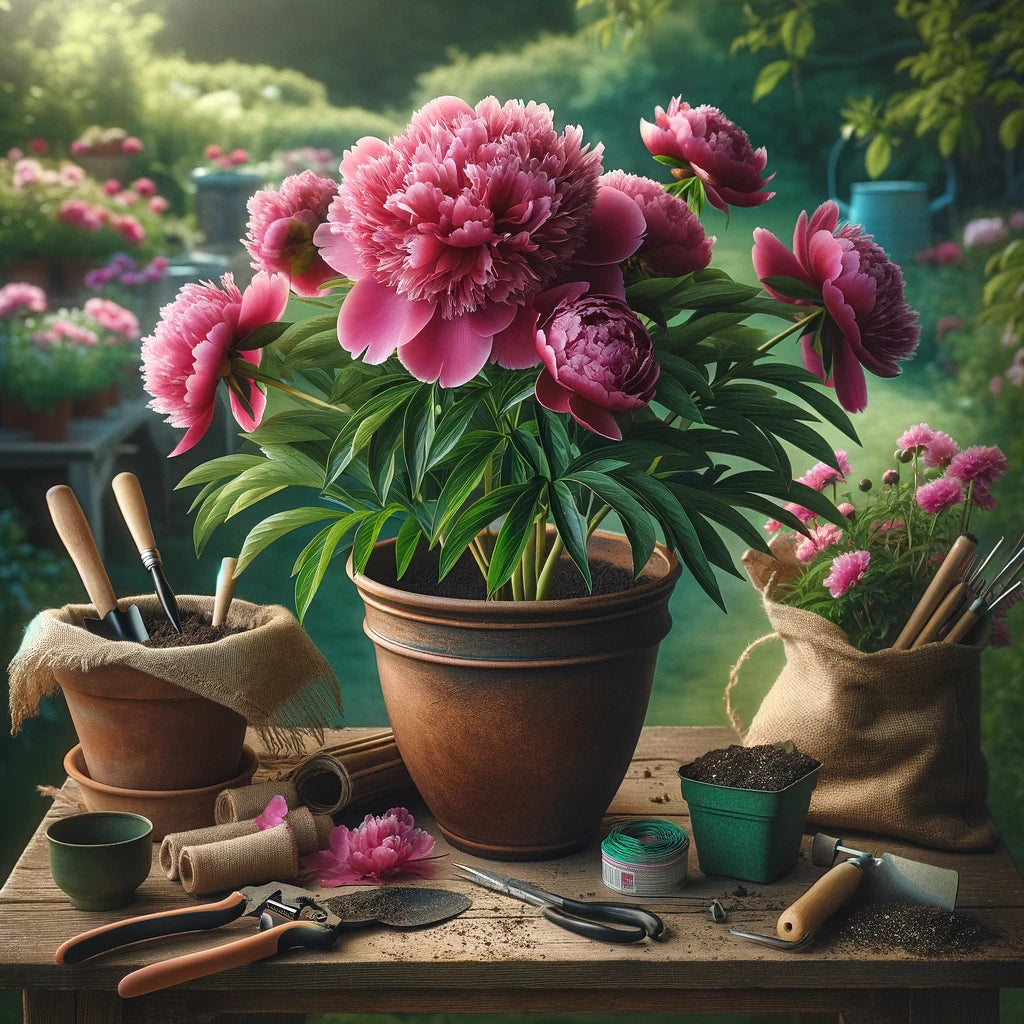Creating a beautiful container garden is immensely enjoyable and has become something of an annual tradition for me. I delight in gathering various plant odds and ends from the nursery and the gardens here to assemble a vibrant spring container. Although peonies are not typically my first thought for container planting, given their remarkable longevity—often living for hundreds of years—they can indeed make a striking addition to a container for a temporary period.
My advice for anyone considering peonies in containers is to provide ample space for root growth and limit their container residence to no more than two years. After this period, it’s essential to transplant the peony into a permanent spot in your garden. While it is entirely feasible to grow peonies in containers, there are two key considerations: deciding whether the peony will remain in the container just for the growing season or if you intend to leave it outside in the container throughout the winter. Both scenarios are achievable, primarily through ensuring excellent drainage.
Here’s my approach: I start with a standard bagged potting mix, which you can find at any big box store. These two cubic-foot bags typically contain a mix of peat moss, compost, finely broken down wood chips, a bit of perlite, a bit of vermiculite, among other ingredients, and cost around ten dollars. To this basic mix, I add one part perlite to every two parts of the mix to enhance drainage significantly.
This amended mix is perfectly suited to support a peony through the spring and summer, maintaining consistent moisture levels throughout the year. For those aiming to keep their peony in the container outdoors through the winter, I incorporate an additional secret ingredient: poultry grit (or chicken grit) commonly found in the U.S. This material, made from small shards of granite (occasionally limestone, but typically granite), is mixed into the potting soil. Adding just enough so that the small gray-red granite pieces are visible throughout the mix serves a crucial purpose. While perlite improves drainage, it tends to rise to the top of the potting mix during the freeze-thaw cycles of winter, leaving the roots, situated in the middle or bottom of the container, at risk of reduced drainage. The heavier poultry grit remains in place, ensuring consistent drainage where it’s needed most.
By integrating these two accessible and affordable components into your potting mix, you can successfully maintain a beautiful peony in a container—or even in a raised bed, for which I would also recommend this mix—throughout the winter, spring, and summer. Ultimately, after approximately two years, it’s time for your peony to be relocated to its forever home, where it can thrive and bloom indefinitely.

